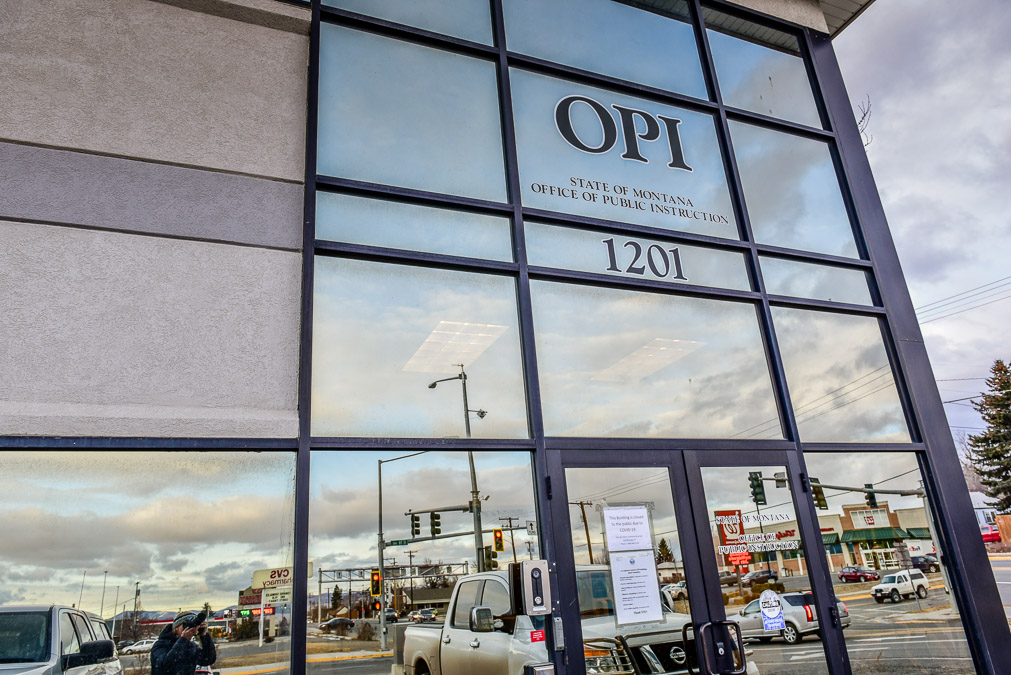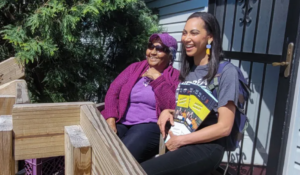Public school enrollment shows fall uptick

Last fall and spring, Montana’s public school system reported notable declines in student enrollment attributed to the COVID-19 pandemic. Now that trend appears to be reversing as K-12 schools across the state have returned to in-person instruction despite the continued presence of the virus.
According to preliminary data from the Montana Office of Public Instruction, statewide enrollment this fall is at 151,765 students, an increase of 6,133 students, or 4.2%, over fall 2020. The total, which is still being reviewed toward the completion of a final report later this year, comes from a routine collection of current enrollment numbers from all K-12 public schools conducted by OPI every October. State Superintendent Elsie Arntzen told Montana Free Press this week that the apparent upward trend is “positive” and “really good for public school in a challenging time.”
Statewide enrollment during last fall’s count had decreased 1.8% from the previous year, and the decline jumped to 2.4% this spring during another routine count taken every February. Meanwhile, homeschool enrollment numbers jumped nearly 70% in fall 2020, prompting speculation among educators and county superintendents that parents were opting to educate their children at home rather than send them to schools struggling to contend with the pandemic. OPI has received homeschool numbers from only 31 of Montana’s 56 counties so far this month, but early numbers already show a collective decline of more than 900 homeschooled students.
This month’s count also indicated that current public school enrollment is 1.7% higher than pre-COVID levels recorded in fall 2019.
Anticipation of a rebound in public school enrollment generated considerable concern and discussion in the Legislature this spring about the impact of enrollment fluctuations on public education funding, which is formulated based on the student counts collected by OPI. Lawmakers and education stakeholders worked to alleviate the issue by allowing districts to utilize millions in federal COVID-19 relief dollars to address any enrollment-based funding challenges that may arise through September 2024.
Arntzen was hesitant to attribute this fall’s enrollment gains solely to parents re-enrolling their children in public schools, suggesting that an influx of new residents in the state could also be a contributing factor. But Lance Melton, executive director of the Montana School Boards Association (MTSBA), said he hasn’t seen a volume of relocating families with children that would put a dent in the “abrupt loss of enrollment that we saw last year,” which totalled 3,549 students across all grades.
“I tend to think that it is a sign that families are voting with their feet, so to speak, and returning to their schools,” Melton said of the upward trend.
The increase comes as schools across the state continue to grapple with disruptions caused by COVID-19. Reports of positive cases among students and teachers have cropped up throughout the state during the first half of the fall semester, and entire schools have been forced to temporarily close their doors and switch to remote learning due to outbreaks. The most recent multiday remote learning announcements came this week from schools in Darby, Glasgow and Livingston.
The situation has created pockets of tension around Montana, with some parents demanding that districts take stricter measures to contain the spread of the virus, and others rallying against proposed and enacted mandates. Arntzen has repeatedly emphasized that local school leaders should consider parental concerns when discussing COVID-19 mitigation strategies, while also encouraging respect for locally elected school board members. In an Oct. 15 letter, she urged Montana school boards and MTSBA to publicly denounce the National School Boards Association, writing that the organization had characterized parents as “domestic terrorists” in requesting U.S. Department of Justice assistance to investigate threats against educators nationwide.
Arntzen told MTFP on Tuesday that her stance on school COVID protocols has not changed in response to continued positive cases and school closures, reiterating that such decisions are a matter of local control. She also tied the often heated debates unfolding at school board public meetings around the state to the fall enrollment uptick, saying parents wouldn’t be at those meetings if they didn’t want their children enrolled in public school.
“I believe these parents want their children to be in public education,” Arntzen said. “At least they’re wanting to choose public education … I’d make it a call to action to our school leaders and our parents to be civil, to understand the purpose of an elected official in that boardroom and the parent’s role in education.”
Asked for a response to Artnzen’s letter, Melton replied by email, saying the superintendent’s solicitation for a denouncement of the National School Boards Association was “misplaced” and “served no purpose other than to create controversy at a time when increased civility, decorum, kindness and mutual respect is what is needed.”
“Elected school boards have welcomed input from the people in their communities and have listened carefully to a variety of viewpoints in making the important decisions necessary to ensure a safe and effective learning environment for each child in every public school,” the response said.
To Melton, the widespread tension over pandemic policies presents a unique challenge for returning students who, he believes, likely have more complex needs now than they’ve had in the past.
“Look at how all of us act as adults, and the diversity of opinion and, in some cases, the loud expression of those opinions in a divisive way,” Melton said in an interview. “Now you’ve got kids who are, in many cases, the object of those disputes, and they’re coming back to school and they’re carrying the concerns associated with the disruption to their traditional life.”
Still, Melton is heartened by recent public polling done by the Montana Public Education Center, a coalition of key public school associations in the state. The full results are slated for release later this week, but according to Melton, the majority of respondents stated that they trust teachers and local school board members more than anyone else in Montana’s education system when it comes to deciding what’s best for students academically. As president of the Montana Federation of Public Employees, which represents the state’s public school teachers, Amanda Curtis said that students coming back to their classrooms is “only a good thing,” especially in districts that are taking proper COVID precautions.
“It’s been a nightmare having kids spread out, some in person, some at home, some just missing completely,” Curtis said. “Teachers worry about their students so much, especially in smaller schools where they follow them from kindergarten all the way through high school. So not knowing necessarily where their students are or if they’re learning anything is just a teacher’s worst-case scenario.”
This article was originally posted on Public school enrollment shows fall uptick





